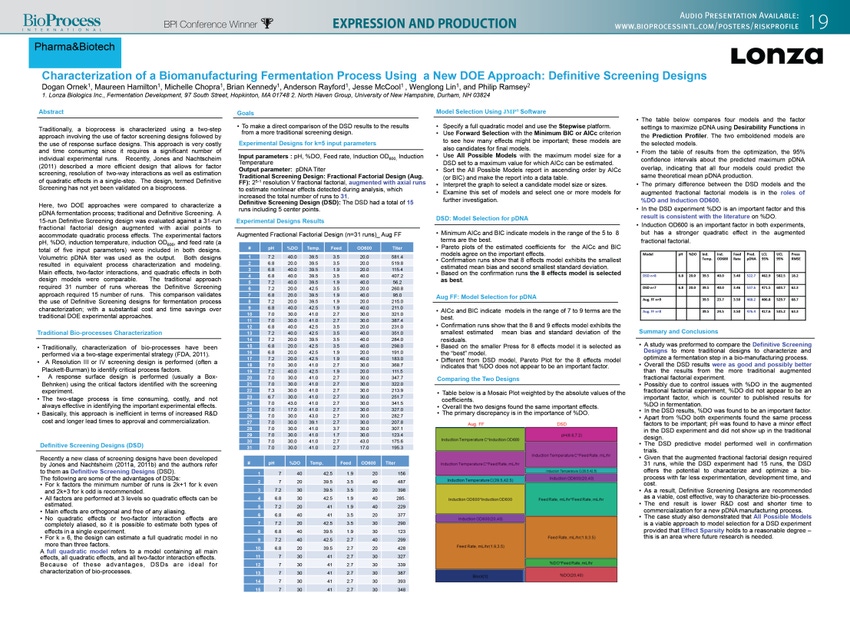Voices of Biotech
Podcast: MilliporeSigma says education vital to creating unbreakable chain for sustainability
MilliporeSigma discusses the importance of people, education, and the benefits of embracing discomfort to bolster sustainability efforts.
November 2, 2012

Sponsored by Lonza Biologics
Traditionally, a bioprocess is characterized using a two-step approach involving factor screening designs followed by response surface designs. This approach is very costly and time consuming since it requires a significant number of runs. Recently, Jones and Nachtscheim (2011) described a more efficient design that allows for factor screening, resolution of two-way interactions as well as estimation of quadratic effects in a single-step. The design, termed Definitive Screening has not yet been validated on a bioprocess.
Here, traditional and Definitive Screening designs were compared to characterize a pDNA fermentation process. A 15-run Definitive Screening design was evaluated against a 31-run fractional factorial design augmented with axial points to accommodate quadratic process effects. The experimental factors pH, %DO, induction temperature, induction OD600, and feed rate were included in both designs. Volumetric pDNA titer was used as the output. Both designs resulted in equivalent process characterization and modeling. Main effects, two-factor interactions, and quadratic effects in both design models were comparable. The traditional approach required 31 runs whereas the Definitive Screening approach required 15 runs. This comparison validates the use of Definitive Screening designs for fermentation process characterization; with a substantial cost and time savings over traditional DOE experimental approaches.
You May Also Like